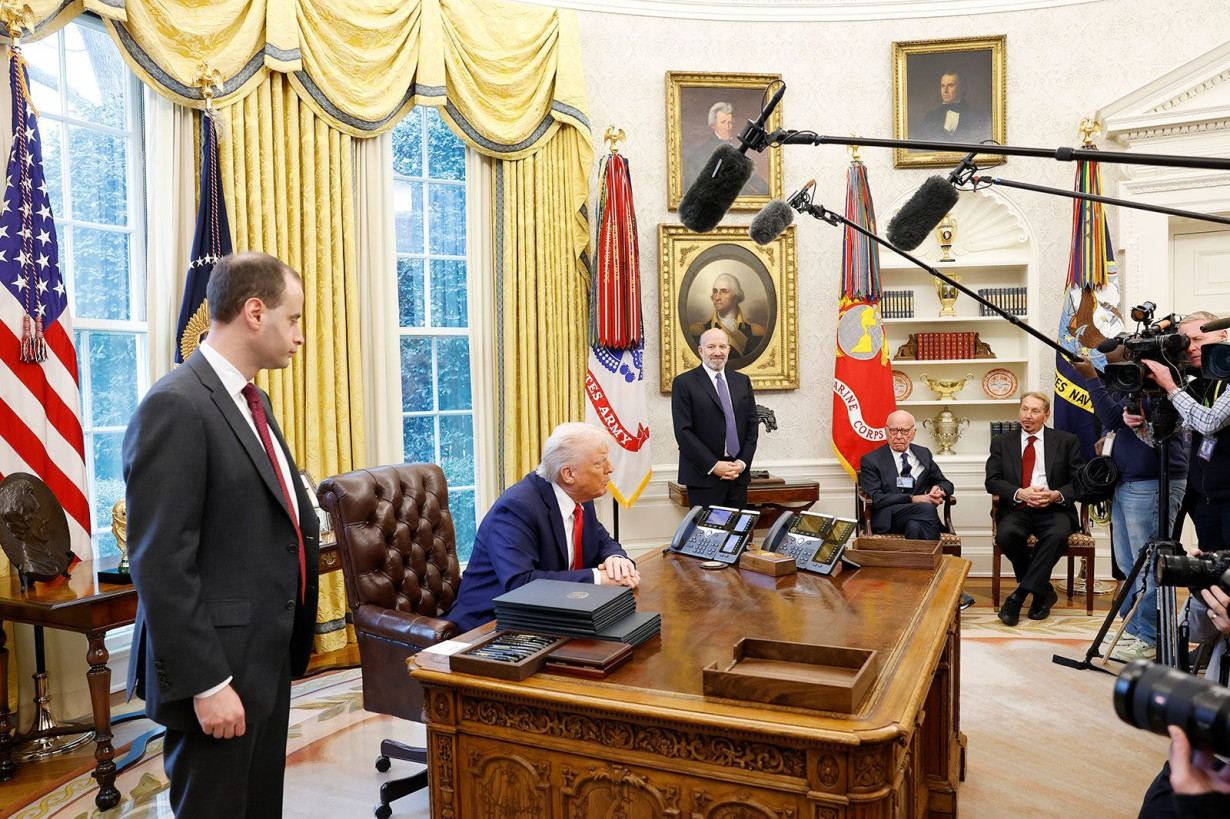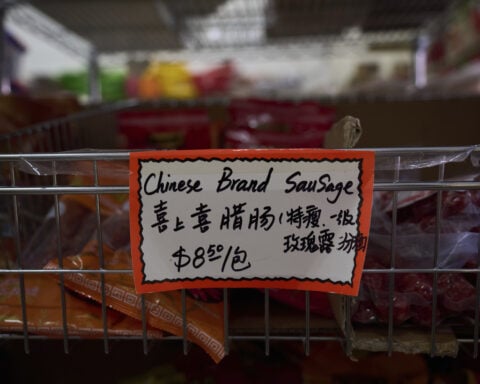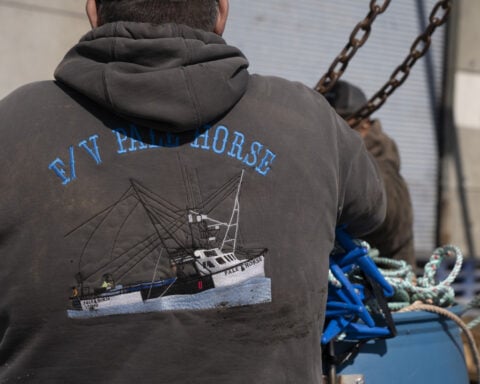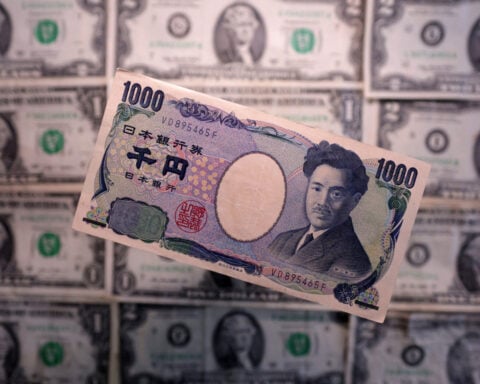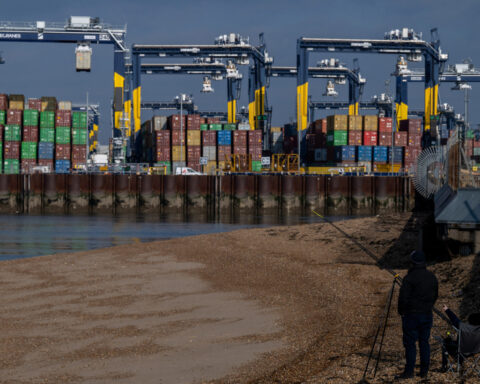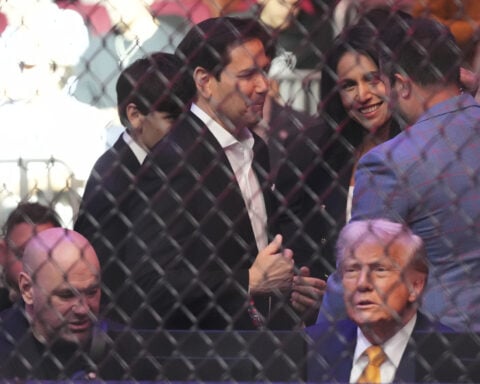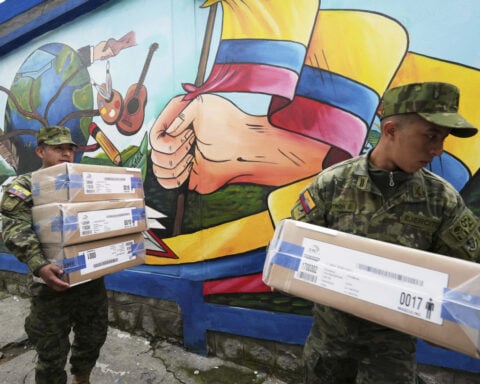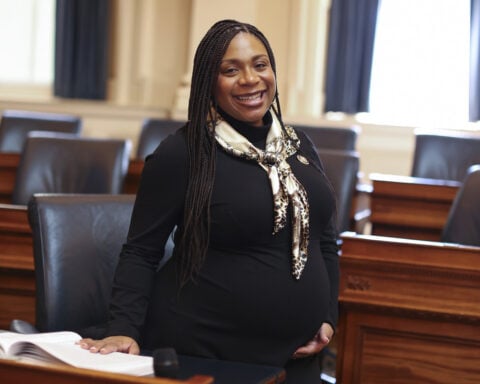Washington (CNN) — On Monday, President Donald Trump put a month-long pause on his planned tariffs on Canadian imports. Earlier in the day, though, he added two new items to his long list of inaccurate complaints about Canada.
In a post on social media and then in comments to reporters in the Oval Office, Trump claimed that Canada prohibits US banks from opening or doing business there. In fact, various well-known US banks are open for business in Canada. And in those same Oval Office remarks, Trump claimed that Canada “for the most part” doesn’t accept US agricultural products. In fact, Canada is one of the world’s biggest buyers of US agricultural products — the No. 1 buyer for some of them.
Here is a fact check.
US banks are operating in Canada
Trump wrote on social media on Monday morning: “Canada doesn’t even allow U.S. Banks to open or do business there. What’s that all about?” In the Oval Office later in the day, Trump said he had raised this complaint with Prime Minister Justin Trudeau.
Trump said: “Canada is very tough. Canada is very — you know, we’re not treated well by Canada, and we have to be treated well. Banks are not, as an example, allowed — did you know that, that banks, American banks, are not allowed to do business in Canada. Can you believe that?”
Trump’s claim is false, as four experts on banking regulation in Canada told CNN on Monday.
“There’s nothing prohibiting American banks from operating here, including having retail branches,” Cristie Ford, a professor at the University of British Columbia’s law school, said in an email.
Canada tightly regulates the banking industry, and it requires various government approvals before a foreign-owned bank can open in the country. But US banks have been operating in Canada for well over a century; the Canadian Bankers Association, an industry group, said in a statement on Monday that “there are 16 U.S.-based bank subsidiaries and branches with around C$113 billion in assets currently operating in Canada” and that “U.S. banks now make up approximately half of all foreign bank assets in Canada.”
Tyler Meredith, former head of economic and fiscal policy for Trudeau, noted on social media on Monday that Bank of America, Wells Fargo, Citigroup, US Bank, JPMorgan, and Northern Trust are among the US banks with current Canadian operations. You can see the others here and here.
Meredith said in an interview that “we take a very careful look at people who want to come into our banking sector, because we consider financial services to be a core asset to Canada and to the Canadian economy” and try hard to avoid the “cascading consequences” the world has seen with bank failures in the US — “but there are existing American institutions, Chinese institutions, Japanese institutions, and European institutions” that have permission to operate in Canada.
US banks can apply to launch a subsidiary in Canada, which is known as a “Schedule II” entity, or a “branch” in Canada (not to be confused with a retail branch), which is known as a “Schedule III” entity.
When a non-Canadian bank establishes a Canadian subsidiary, “that subsidiary will be subject to the same regulatory regime and capital requirements as a domestically owned and operated bank,” said Bryce Tingle, a professor at the University of Calgary’s law school, in an email. “It will have exactly the same powers and market access as a Canadian bank.”
Jeremy Kronick, director of the Centre on Financial and Monetary Policy at the C.D. Howe Institute think tank in Toronto, explained in an email that there are downsides to the subsidiary option from the perspective of foreign banks: a subsidiary is “a separate legal entity from their parent, thus requiring their own local capital and liquidity structures. From the foreign bank’s perspective, this is obviously inefficient.”
Most US banks operating in Canada have chosen the “branch” option that does not subject them to the requirements of a subsidiary. However, there is a different restriction on branches: they are not allowed to accept deposits lower than $150,000 CAD.
That, of course, means they can’t conduct retail operations for average Canadian citizens – but they can engage in various profitable activities, for companies and wealthy individuals, that are less visible to the general public. The Canadian Bankers Association said the US banks in Canada “specialize in a range of financial services, including corporate and commercial lending, treasury services, credit card products, investment banking and mortgage financing.”
Kronick said: “Bottom line: there are trade-offs to each option, but foreign banks certainly can operate in Canada. A case could probably be made that the restrictions on both options prevent full competition with Canadian banks, but not that ‘Canada doesn’t even allow U.S. Banks to open or do business there’ as Trump stated.”
Canada is one of the biggest export markets for US agriculture
In the Oval Office, Trump said of Canada: “We can’t let them take advantage of the US. They don’t take our agricultural product for the most part.” He added shortly after: “They don’t take our agricultural product for the most part, our milk and dairy, etc. A little bit they do, but not much.”
This is false, even with Trump’s “for the most part” and “a little bit they do” qualifiers.
While Canada does limit foreign access to its dairy market in particular, Canada is nonetheless one of the top export markets for US dairy products and for agricultural products in general. Canada bought $27.9 billion worth of US agricultural exports in the 2023 fiscal year, making it the third-biggest buyer in the world behind only China ($33.7 billion) and Mexico ($28.2 billion).
“Canada consistently ranks among our top markets for agricultural product exports, representing one of our most significant and reliable trading partners,” the US Department of Agriculture (USDA) said on its website last year.
In 2023, USDA data shows, Canada was the top export market for US fresh fruit, fresh vegetables, ethanol, live animals, dog and cat food, and baked goods; the second-biggest export market for US dairy products and eggs and related products; the third-biggest export market for US poultry and related products excluding eggs; the fourth-biggest export market for US pork and related products; and the fifth-biggest export market for US beef and corn.
While the North American Free Trade Agreement of the 1990s (which was revised by a trade agreement during Trump’s first term) left almost all US-Canada agricultural trade free of tariffs and quotas, there is always some friction between the two countries over certain elements of the trading relationship. Canada’s protectionist “supply management” regime governing its dairy industry has for years been a source of irritation to Trump and to American lawmakers from both major parties.
But the USDA says on its website: “Canada is an important market for U.S. dairy products, second only to Mexico. From 2010 to 2021, total dairy exports from the United States to Canada, adjusted for inflation, rose 48 percent from $466.4 million in 2010 to $691.5 million in 2021.”
Regardless, it’s certainly not true that Canada doesn’t “take” US farm products in general.
The-CNN-Wire
™ & © 2025 Cable News Network, Inc., a Warner Bros. Discovery Company. All rights reserved.

 Trump has begun another trade war. Here's a timeline of how we got here
Trump has begun another trade war. Here's a timeline of how we got here
 Canada's leader laments lost friendship with US in town that sheltered stranded Americans after 9/11
Canada's leader laments lost friendship with US in town that sheltered stranded Americans after 9/11
 Chinese EV giant BYD's fourth-quarter profit leaps 73%
Chinese EV giant BYD's fourth-quarter profit leaps 73%
 You're an American in another land? Prepare to talk about the why and how of Trump 2.0
You're an American in another land? Prepare to talk about the why and how of Trump 2.0
 Chalk talk: Star power, top teams and No. 5 seeds headline the women's March Madness Sweet 16
Chalk talk: Star power, top teams and No. 5 seeds headline the women's March Madness Sweet 16
 Purdue returns to Sweet 16 with 76-62 win over McNeese in March Madness
Purdue returns to Sweet 16 with 76-62 win over McNeese in March Madness
